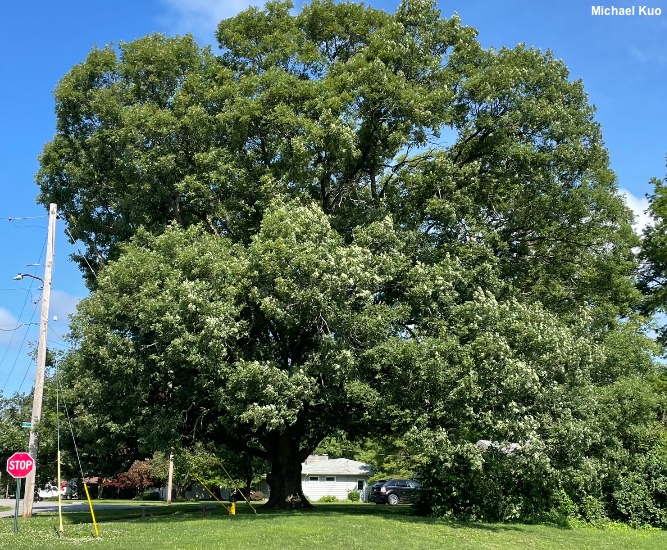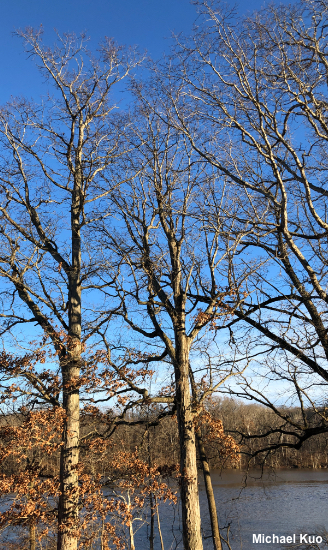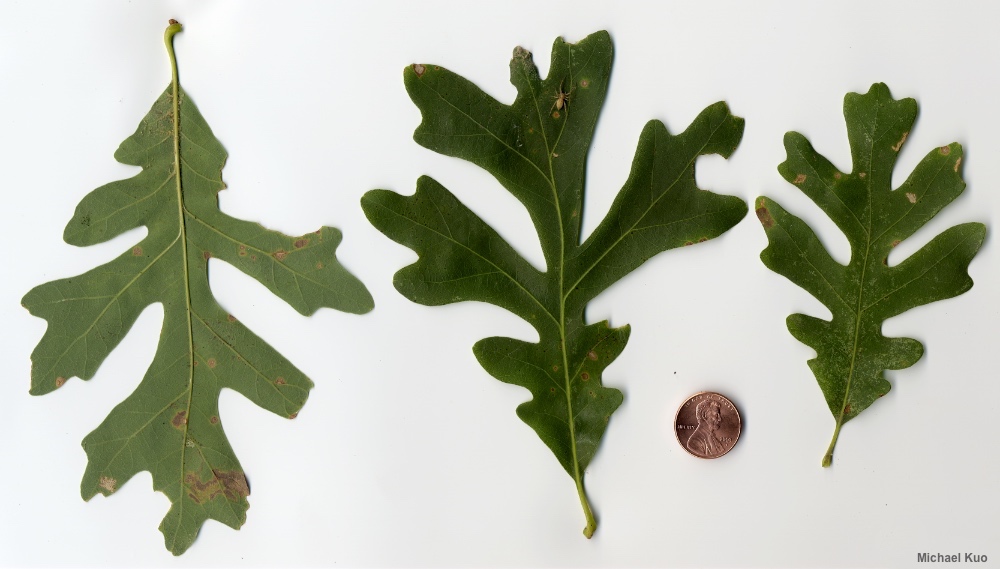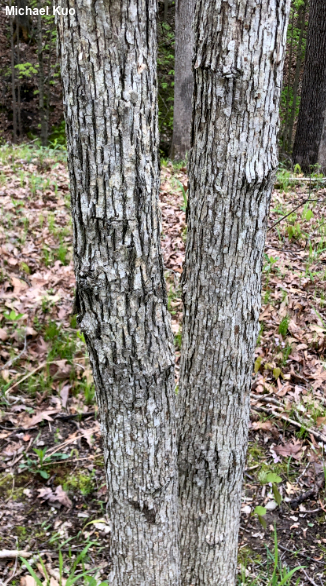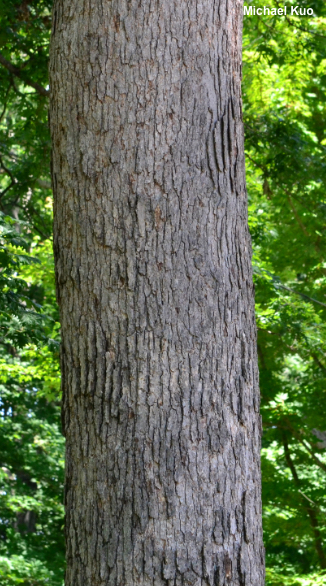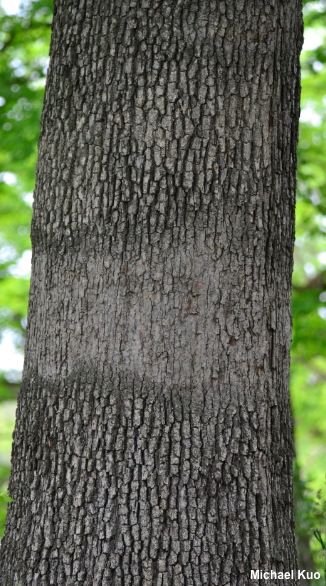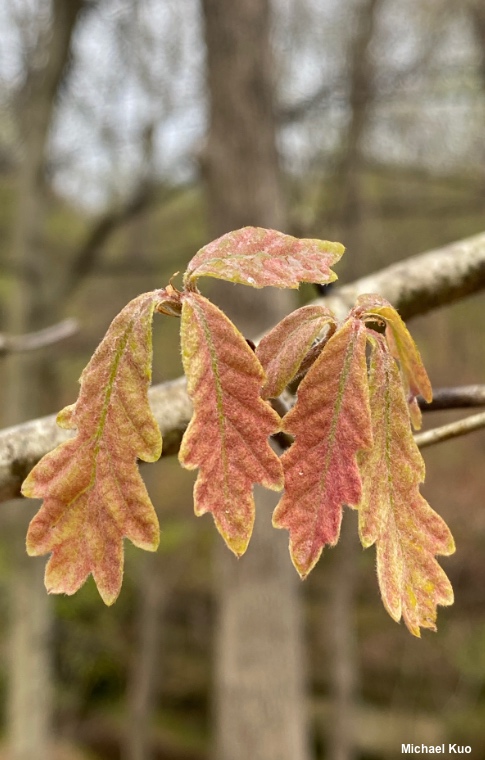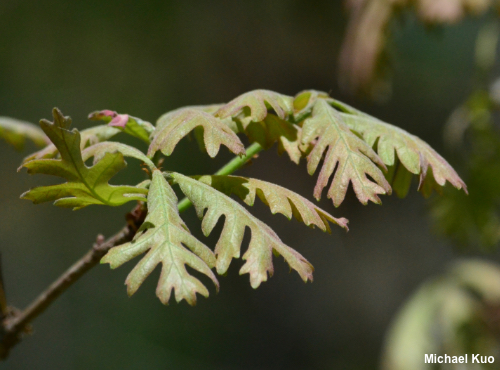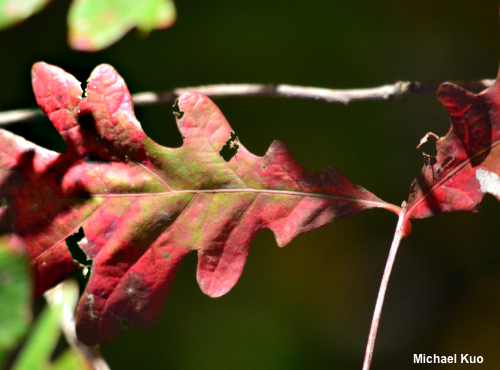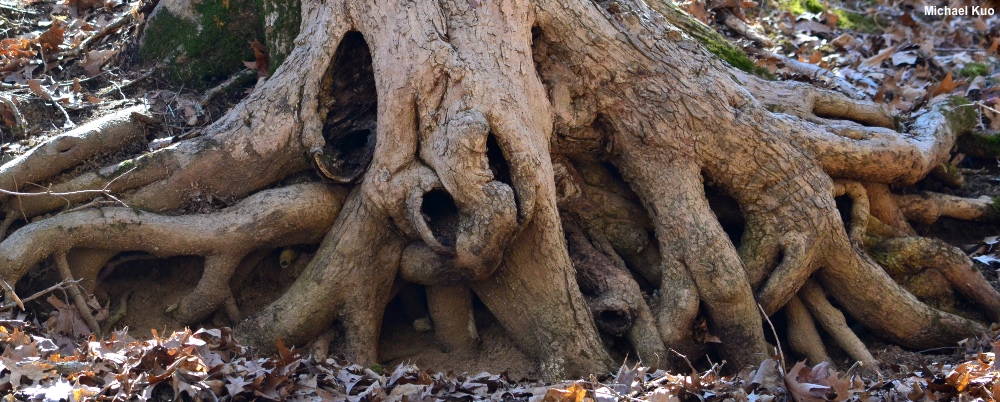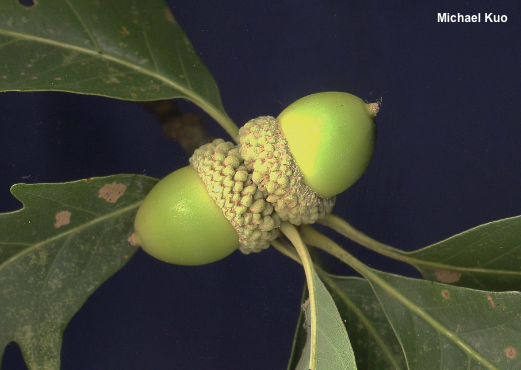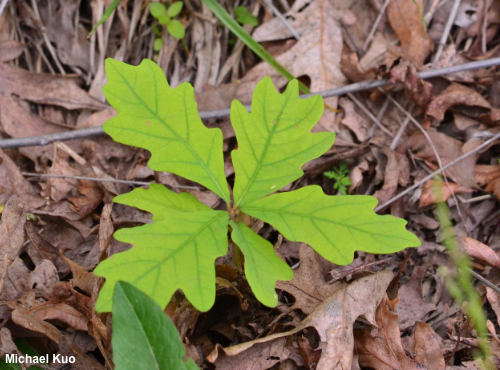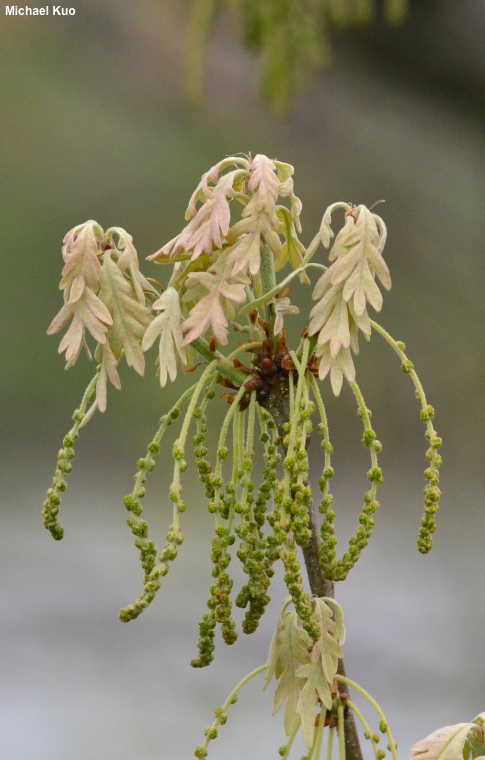 Quercus alba (white oak) |
|
Widely distributed east of the Great Plains, Quercus alba is one of our best-known trees, with some individuals living for centuries. White oak doesn't get particularly tall (trees more than 80 feet high are rare), but with age it stretches outward in all directions, when unimpeded, and old trees are often wider than they are tall. Such trees are usually seen in urban or savannah-like settings, since forest trees must compete for space; in the woods white oaks often appear on ridges and slopes in oak-hickory ecosystems, and their lateral growth is limited. Many, many mushrooms are associated with white oaks. Mycorrhizal species include many species of Amanita, Boletus cf. reticulatus, Cortinarius torvus, Hydnellum spongiosipes, many species of Lactarius, Paragyrodon sphaerosporus, innumerable species of Russula, Tylopilus rubrobrunneus, and many others. Saprobes decomposing white oak wood, bark, or litter include Aleurodiscus oakesii, Gliophorus psittacinus, Inonotus dryadeus, Marasmius sullivantii, Phlebia incarnata, Polyporus alveolaris, and Stereum ostrea. |
|
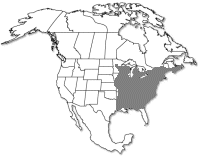
|
|
|
|
|
|
|
|
|
|
|
|
|
|
|
|
|
|
|
Kuo, Michael (July, 2021). Quercus alba (white oak). Retrieved from the MushroomExpert.com website: www.mushroomexpert.com/trees/quercus_alba.html All text and images © , mushroomexpert.com. |
